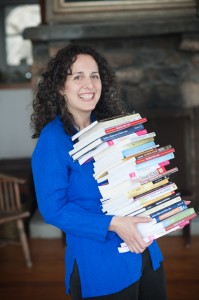
Whoops, As I reviewed the inspiring entries in our Pitch Your Book to Life Contest, I realized that a few did not make it onto the blog. So, here is my feedback on several more inspiring and terrific entries.
by Lisa Tener

Whoops, As I reviewed the inspiring entries in our Pitch Your Book to Life Contest, I realized that a few did not make it onto the blog. So, here is my feedback on several more inspiring and terrific entries.
by Lisa Tener
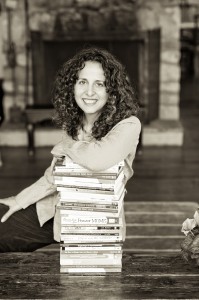
During a consultation with a newly enrolled Bring Your Book to Life participant, Ariel shyly admitted that she was a bit afraid I might give her a hard time for not getting started on the course materials before our session. After all, she’d been beating herself up for days. Wouldn’t I do the same?
Ariel committed to my book writing program and then her life seemed to fill with other commitments–a trip to Europe for work, trips to visit family members and, of course, all those little interruptions that make it impossible to get started–meal preparation, errands, a client project…you can fill in the blanks.
I assured Ariel that her experience was common. And we did some brainstorming. I encouraged Ariel to use her plane time to work through the preliminary course materials and enjoy the process of getting clear about her book concept and structure. She began to get excited about the upcoming trip and the way she could fit her book into her travel schedule.

I also introduced Ariel to my favorite client exercise: Meet Your Muse. I took her through a visualization from meadow to woods to a clearing and a small building where her muse was already waiting for her. For some people their muse is a totem animal–hawk, bear or even mouse. For others, it’s a wise being, an elder, a jester, their wiser self. And for still others the muse may be light, a color or just a sense of connecting with something bigger than their everyday self.
Ariel’s muse told her the real culprit was her fear blocking her. She could feel those people in her life who’d told her she couldn’t–those judgmental adults from childhood she carried around within her psyche. I had her ask her muse to help her start to let go of that and she could feel the knot in her stomach start to unwind.

Ariel’s muse hugged her and told her, “Yes, you can write this book. And you don’t have to do it alone. I’ll be with you every step of the way.”
Ariel thanked me for creating a safe space where she could “mess up” and not be doing things perfectly and I pointed out that she was doing it perfectly. It turns out that the exact steps she needed to go through were the steps she needed to take her readers to go through in order to benefit from the advice in her own book. Her process was important not just for her (breaking through old blocks and belief systems and expanding into her own personal power), but important for the light it will shed on her own readers’ processes.

After clearing her fears, Ariel realized she could commit Tuesday and Thursday nights to writing. From years of experience I know that evenings can be challenging, even to a night owl, and suggested she first find some time to rejuvenate before the writing–a walk outdoors, a meditation, listening to my Meet Your Muse meditation (a free download) or playing some relaxing music. This activity could provide a supportive transition to come to the writing with renewed energy.

If you’re experiencing any challenges that are making it hard to write, I recommend a similar process to Ariel’s. First do some practical brainstorming about what you can do and then go to your muse to tap into your creative inner wisdom.
Are you beating yourself up or allowing your process to unfold? Yes, there will be a time for deadlines, schedules, holding yourself to commitments, but perhaps first you need to create the space to work through something. I invite you to listen to this downloadable gift from me–my Meet Your Writing Muse visualization and experience a shift that can help you get your book written–a compelling and powerful book that makes a difference in the world.
And please do share what you’ve done to move out of fear, transform blocks and get writing, as well as any insights you’ve received from your writing muse.
by Lisa Tener
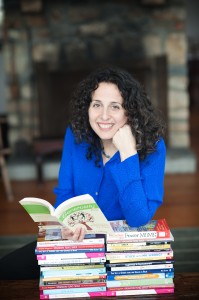
When you’re writing a book, many questions crop up—from those first steps to get started to more specific issues like whether to collaborate with a co-author (and how to find one) to whether it’s worth getting an agent or traditional publisher. Over the past week and a half, I’ve answered 6 of your questions via video on my book writing page on Facebook.
Responses have been terrific! I look forward to posting a couple more videos and giving you some of my most effective tips for starting and writing a book on the “Birth Your Book” call, March 7.
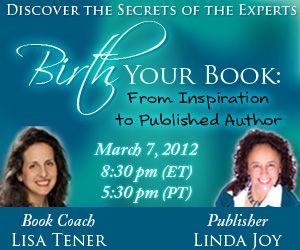
More videos coming! View all of them on our Facebook page: Lisa Tener: Bring Your Book to Life and please ask your book writing and publishing questions—either here or on the page and I will answer.
by Lisa Tener

Editing your how-to book or memoir is crucial for writing a compelling, clear and successful book. Yet, writers often feel overwhelmed when they even think about editing a book. While I highly recommend hiring a qualified book editor (get references), you will actually get much more out of the experience if you do some of your own editing first. Then your book editor can focus on the finer points of the writing.
To be clear, I am not talking about early stage developmental editing (structuring the book). Ideally, that should be done at the start of your process if you need help with it. Rather, the focus here is on clear writing, flow and wordsmithing.
You’ll probably do some editing chapter by chapter as you write the nonfiction book…and then several more rounds once the whole book is written and you receive feedback from readers in your target market.
Whether you are editing each chapter as you go along, or waiting until you finish a first draft of the entire book (either is fine), I suggest you go through several times and, in each pass, focus on one or two book editing issues:

First pass: Focus on clarity. Is the writing clear? Where might the reader get confused? Get reader feedback for this. In addition, you can have someone read aloud to you and it will often be clear where they are confused or misread something.
Second pass: VERBS: Eliminate as many generic verbs as possible and replace with active and action-oriented verbs. Verbs give your writing energy. Do a FIND in Microsoft word for verbs like “is” “was” “had” “has” “could” “are” etc.
See if you can easily replace these with more energized verbs. Just about anything is more energizing than these verbs, even the word “feel” or “felt” though don’t overuse that one. In some cases, you may need to change the structure of a sentence and make the subject the object or vice versa.

Third Pass: Show vs. Tell: This edit can take a while. See where you spoon feed the reader rather than making the writing come alive so that the reader can draw his or her own conclusions. Statistics can paint a picture, as can descriptions that access the different senses. You don’t want to overdo descriptions–just pick the most pertinent–or even quirky–details. More on show vs. tell can be found on this post about secrets to compelling writing.
Fourth Pass: Tight Writing: Here’s where you ask yourself, “How can I say this more succinctly?” “Are there any obvious words I can just delete?” “Where can I simplify?”
Fifth Pass: Read Aloud and Listen for Blips and Bumps: See if you misread any part of the manuscript. Also notice where you trip up or break the flow. Notice if anything just doesn’t quite sound right. Tweak.
Have any favorite book editing tips I left out? Any questions on editing a nonfiction book (how-to, self-help or memoir)? Please share as a comment. Thanks.
by Lisa Tener

Years ago, photographer Scott Indermaur told me of his dream of putting his photographs from the REVEALED Project into a book. Not easy getting a publisher for a photography book in this competitive market and economy.
And, of course, self publishing a photography book full of photos on high quality paper is a much more expensive endeavor than self-publishing a how-to book. So, that seemed out of the question, until Scott discovered KickStarter and put together his own funding campaign to underwrite the project and make his book a reality.
Last fall I received the request that went out to Scott’s entire list–and subsequently many of our friends–and I “invested” in his book. In fact, I will soon receive my free copy now that the book is fully funded. How exciting to be one of the people in this grassroots movement to get this inspiring book out there.

Dylan Howard, who is filming a documentary about my mother-in-law’s art and her work for peace–Anne Mimi Sammis, painter, sculptor and host of PBS-TV’s Love to Paint with Mimi discovered Indie Go Go as a similar fundraising site for the arts. The documentary, which is being filmed in conjunction with PBS-TV in RI, has raised about 34% of its funding goal.
You may remember Mimi from the beautiful image of her painting of birches in winter that I sent out in my e-holiday card. Perhaps you’ll join me in supporting this project or another. And if you’re looking to fund your own project, check out KickStarter and IndieGoGo which make it easy for community to gather together and help you make your dream come true–and create the impact you know you can make with your book, film or art.
by Lisa Tener

While preparing to teach Inspired to Write tomorrow, I’ve been thinking about the importance of support in keeping our writing juices flowing. It seems to me a challenge all writers struggle with.
I thought I’d share some of the writing strategies I use myself and those I use with my private clients and in my book writing classes.
1. Find a Buddy: About 98% of the population needs some accountability to get their book (or other writing project) done. Buddies can support each other to overcome any challenges, make suggestions and offers solutions that you may not be able to see yourself and inspire you to do the writing you committed to each week. You can even meet at a cafe and write simultaneously. And a buddy is free!
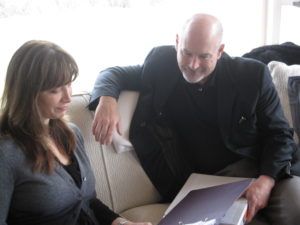
2. Engage a Collaborator. Granted, this strategy is not for the faint of heart. Collaborating takes good judgement in choosing a collaborator, a commitment to clear communication and working out the often-inevitable human challenges that can come up when working closely with someone. However, it can also be incredibly rewarding. My first book was written with two collaborators. My course materials were originally written with a collaborator and the book I am currently working on is being written with a collaborator.
Why? Three reasons:
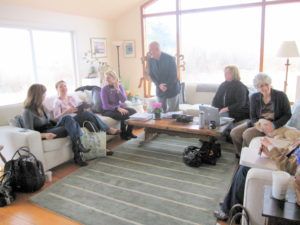
3. Join a Writing Program or Take a Writing Class: Here’s another strategy with multiple benefits:
4. Find a Mentor, Coach or Editor: This person can provide support, accountability and technical skills. They can also help you problem solve to overcome any challenges.
5. Connect with Your Muse: We all have that creative part of us and inner knowing that can support us through any creative challenges. If you find yourself losing touch with that part of you, sit quietly, close your eyes and take an inner journey to connect. If this exercise sounds fun, try this free guided visualization for writers.
If the idea of a writing class or book writing program inspires you, consider my Bring Your Book to Life Program.

